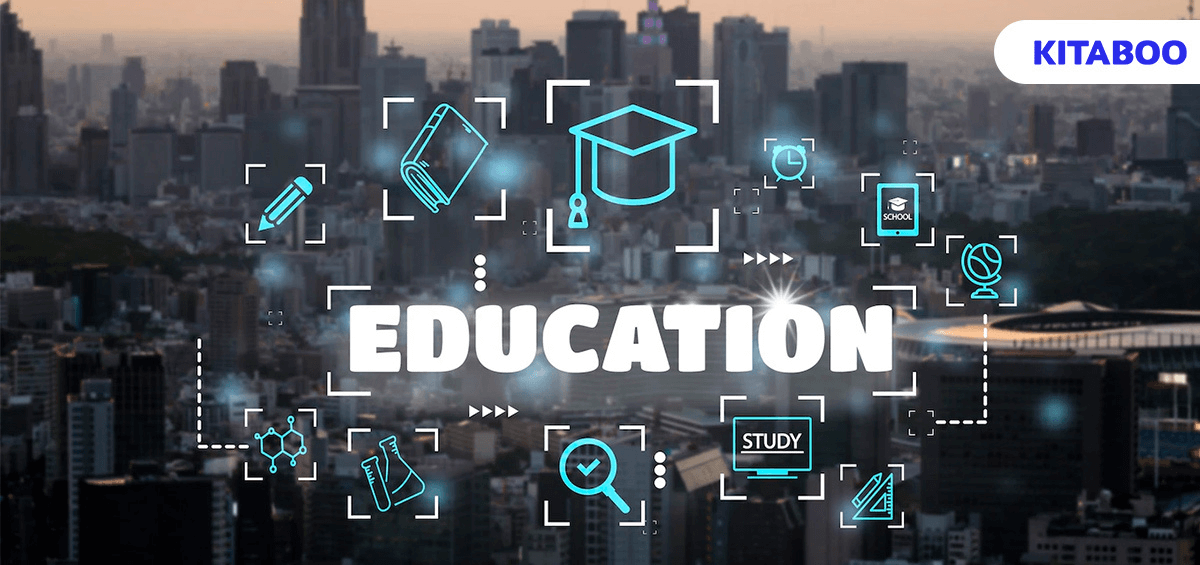Education has evolved into a dynamic, ever-changing landscape. Learning is becoming increasingly complex and progressive as we try to connect students and schools through innovative methods.
Key trends indicate that today’s generation of ‘Zoomers‘ or Generation Z is more tech-savvy than ever before. Thanks to technology, learning can be fun and engaging while helping students develop critical thinking skills and knowledge.
Table of Contents:
Educational Technology- An Introduction
Educational technology has improved the learning process, making it possible to deliver high-quality education enabled by exploratory tools and technologies. Everyone needs motivation or a friendly reminder to do better and excel at the task at hand. Similarly, students learn and apply better when motivated or given a morale boost.
Learners need to be motivated and engaged; hence, teaching strategies must be examined from a different lens in various fields of study to make learning more interesting and fun. In an effort to combat the complexity of the educational sector, we have seen an increase in the phenomenon called gamification technology being adopted by educational institutions, learning companies, schools, and businesses alike.
Research and Markets report analysis revealed that the EdTech market is expected to reach USD 605.40 billion by 2027. With such a massive growth prediction, gamification will only help learners do better and grow more.
Gamification is the nudge– the technological advancement driving the EdTech market forward with a significant increase in confidence, fluid reasoning, and skill development of learners. Digital publishing platforms play a key role in EdTech, for instance, KITABOO is a digital textbook platform that empowers teachers and other educational personnel by making learning more experiential. It provides them with the necessary tools to facilitate better teaching-learning relationships.
There are many advantages of gamification in education that you can learn from below.
What is Gamification in Education?
The origins of gamification can be traced back to as early as 2002, when the term was coined by a game designer called Nick Pelling. He was tasked with developing a game-like interface for ATMs and vending machines.
We have come a long way with the term gamification being applied to everything from grocery shopping to healthcare and, most importantly, education. Gamification in education is a video game-like process that involves game design elements and mechanics in an educational setting to:
- Engage students in learning
- Improve the effectiveness of educational experiences
- Help students develop skills that are needed to succeed in the real world
- Curate a personalized learning experience
- Motivate students to achieve specific outcomes
At KITABOO, we have established an end-to-end digital ecosystem enriching the educational experience by creating an interactive environment that motivates learners to take action, engage with content, and improve their performance.
The Difference Between Gamification and Game-based Learning
Gamification is a digital strategy that uses game elements to engage users and motivate them to perform certain tasks. Gamification aims to make learning more fun, rewarding, or effective.
In contrast, game-based learning (GBL) adopts an educational approach that strategically encourages students to concentrate on assignments that align with the requirements of their chosen course of study. GBL is gaining popularity in the workplace, too.
Tabular Overview:
| Key Differences | Gamification | Game-based learning |
| Purpose | Using game design elements to improve performance in different settings. | Using games as a whole in the form of an educational tool. |
| Implementation | Adding fun elements that have nothing to do with the games themselves. | Education is imparted through the game itself, which is built around different concepts. |
| Process | Engage users in a game-like environment- It has no rules, and therefore, failure has no consequences. | It is designed around the idea that there should be rules (or at least guidelines) that all participants implement. |
| Outcome | Making learning engaging and fun elements motivates people toward specific goals or behaviors. | Helps students learn certain skills or understand concepts better |
How is EdTech Leveraging Gamification for Educational Purposes?
As we move into the future of education, gamification is becoming more and more prevalent. Educational providers and institutions are embracing the concept of digital learning platforms that have transformed the process with self-paced methods that promote collaboration and cooperation at all levels.
The digital textbook platform, KITABOO offers a robust digital experience with interactive methods to connect students and teachers. Let’s see how you can incorporate gamification in the instruction medium:
- Competitions and prizes: Students compete against one another or in teams for points based on their learning. The prizes can include badges, trophies, and so forth.
- Leaderboards: Students compete with their peers for points based on percentages of correctly answered questions or levels of mastery attained.
- Challenges: Students compete with one another by finishing specific tasks, like figuring out math problems or remembering facts or ideas.
Gamification has become popular with teachers and educators because it helps promote the learning process in the best way possible.
Benefits of Gamification in Education
Education is now a continuous process that extends beyond the four walls of the classroom. Flipping the teaching and learning processes is necessary to accomplish this goal.
Here’s a student’s perspective from a research study conducted to gauge the efficacy of gamification in teaching methods:
“I think gamification can make me want to learn more, and it would also deepen the relationship between team members and increase communication skills through the game.”
Gamification in education is crucial here, with numerous benefits to its role:
- Critical thinking: Gamification stimulates students’ creativity. It aids in their development of capacities for problem-solving and decision-making.
- Explore and observe: Gamification makes education appealing, increasing participation in class activities and improving focus on what is being taught.
- Better results: Gamification drives students to put more effort into their homework and study more effectively while lowering inefficiency and non-attendance. An IJCS research finding stated that reading in conjunction with gamification can improve learning outcomes by up to 60.67%.
Increase engagement: Gamification encourages a deeper awareness of concepts and the development of a more profound connection with the curriculum, which can improve knowledge retention.
Final Note
Over the past few years, there has been a substantial rise in the use of technology in classrooms, with schools worldwide implementing various types of strategies like gamification and digital learning platforms. Improved learning outcomes and increased student retention are the main goals.
The cutting-edge digital textbook platform KITABOO adapts to the changing technological needs regularly. Every component encourages enjoyable and stimulating activities that inspire students to want to learn more through gamification. The platform also makes it simple for teachers to monitor their student’s development and reward them when they perform well on particular assignments or exercises.
To know more, write to us at KITABOO@hurix.com.
Suggested Reads:
Discover How An Ebook Conversion, Publishing & Distribution Platform Can Help You
Kitaboo is a cloud-based content platform to create-publish & securely distribute interactive mobile-ready ebooks.
You May Also Like
-
Choosing the Right eBook Distributor: A 2024 Guide
Blog,Digital Publishing,eBook solution / February 29, 2024









